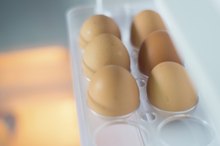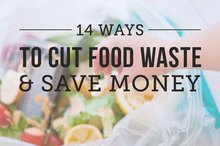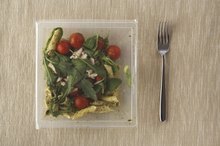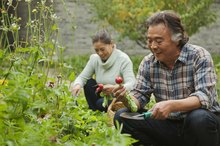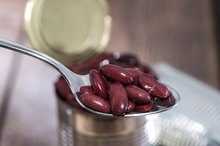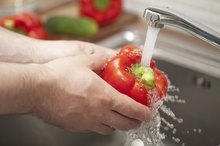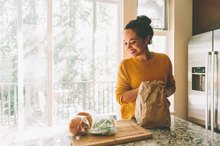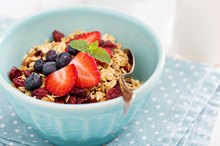What does fact checked mean?
At Healthfully, we strive to deliver objective content that is accurate and up-to-date. Our team periodically reviews articles in order to ensure content quality. The sources cited below consist of evidence from peer-reviewed journals, prominent medical organizations, academic associations, and government data.
The information contained on this site is for informational purposes only, and should not be used as a substitute for the advice of a professional health care provider. Please check with the appropriate physician regarding health questions and concerns. Although we strive to deliver accurate and up-to-date information, no guarantee to that effect is made.
How to Prevent Bacterial Growth in Food
Prevention is always best when it comes to food-borne illness. According to The Partnership for Food Safety Education, food poisoning can cause long-term problems. Kidney failure can result from E. coli, arthritis from Campylobacter, and stillbirths from Listeria.
**Spoilage bacteria is what makes food in the refrigerator look and smell bad, but usually does not cause illness.
** Pathogenic bacteria do make you sick.
These are invisible and generally do not smell or taste bad. Proper food handling is the only defense.
Store Food Safely
Select produce with a critical eye to avoid bruised or damaged food. Make sure it is refrigerated in the store. Plan to select meat last so it doesn't sit in the cart warming up.
How to Carry Lunch Food in a Thermos
Learn More
Do grocery shopping last so groceries do not sit in the car. When weather is very hot or you will be delayed getting home, bring a cooler to keep meats and perishables cold. At home, put groceries in the refrigerator immediately.
Set the refrigerator below 40 degrees Fahrenheit and the freezer below 0 degrees Fahrenheit. Don't overload the refrigerator. Cool air must be able to circulate to keep food at the proper temperature.
Bacteria That Grow in the Refrigerator
Learn More
Store canned food away from very high or low temperatures. Do not use cans that are dented or bulging. Read and follow expiration dates.
Stop bacteria growth by freezing food. Package it properly in freezer bags with the date clearly marked. Freezing does not kill bacteria so after thawing, cook promptly.
- Select produce with a critical eye to avoid bruised or damaged food.
- When weather is very hot or you will be delayed getting home, bring a cooler to keep meats and perishables cold.
Prepare Food Correctly
Wash fruits and vegetables including bagged salad under cold running water to rinse bacteria off the surface before using. Use the refrigerator for thawing slowly, or the microwave for the fastest thaw. Always marinate food in the refrigerator.
Cook all food to the proper temperature to kill bacteria. Most foods should be heated to 165 degrees Fahrenheit to kill bacteria. Purchase a good quality meat thermometer to check for safe temperatures. Keep hot food at least 145 degrees.
Use small containers to store leftovers so they cool quickly. Do not use food that has been out at room temperature longer than 2 hours. Reheat leftovers to a safe 165 degrees.
Wash and dry hands before and during food preparation. If you are not sure about the quality or safety of food, throw it out.
Tips
Purchase a thermometer to check the temperature of your refrigerator and freezer.
Irradiated food has been treated to kill bacteria. These foods still need to handled properly in the event that bacteria has survived.
When the power goes out, do not open refrigerator or freezer doors. If you will be without electricity for more than a day, get dry ice or regular ice to preserve food.
- Wash fruits and vegetables including bagged salad under cold running water to rinse bacteria off the surface before using.
- Purchase a good quality meat thermometer to check for safe temperatures.
Related Articles
Tips
- Purchase a thermometer to check the temperature of your refrigerator and freezer.
- Irradiated food has been treated to kill bacteria. These foods still need to handled properly in the event that bacteria has survived.
- When the power goes out, do not open refrigerator or freezer doors. If you will be without electricity for more than a day, get dry ice or regular ice to preserve food.
Writer Bio
Kimberly Wilson has been a freelancer since 2009. She also works as a marketing and sales professional. Wilson specializes in mental heath and wellness articles for various websites. She has a Bachelor of Arts in psychology from Syracuse University.

